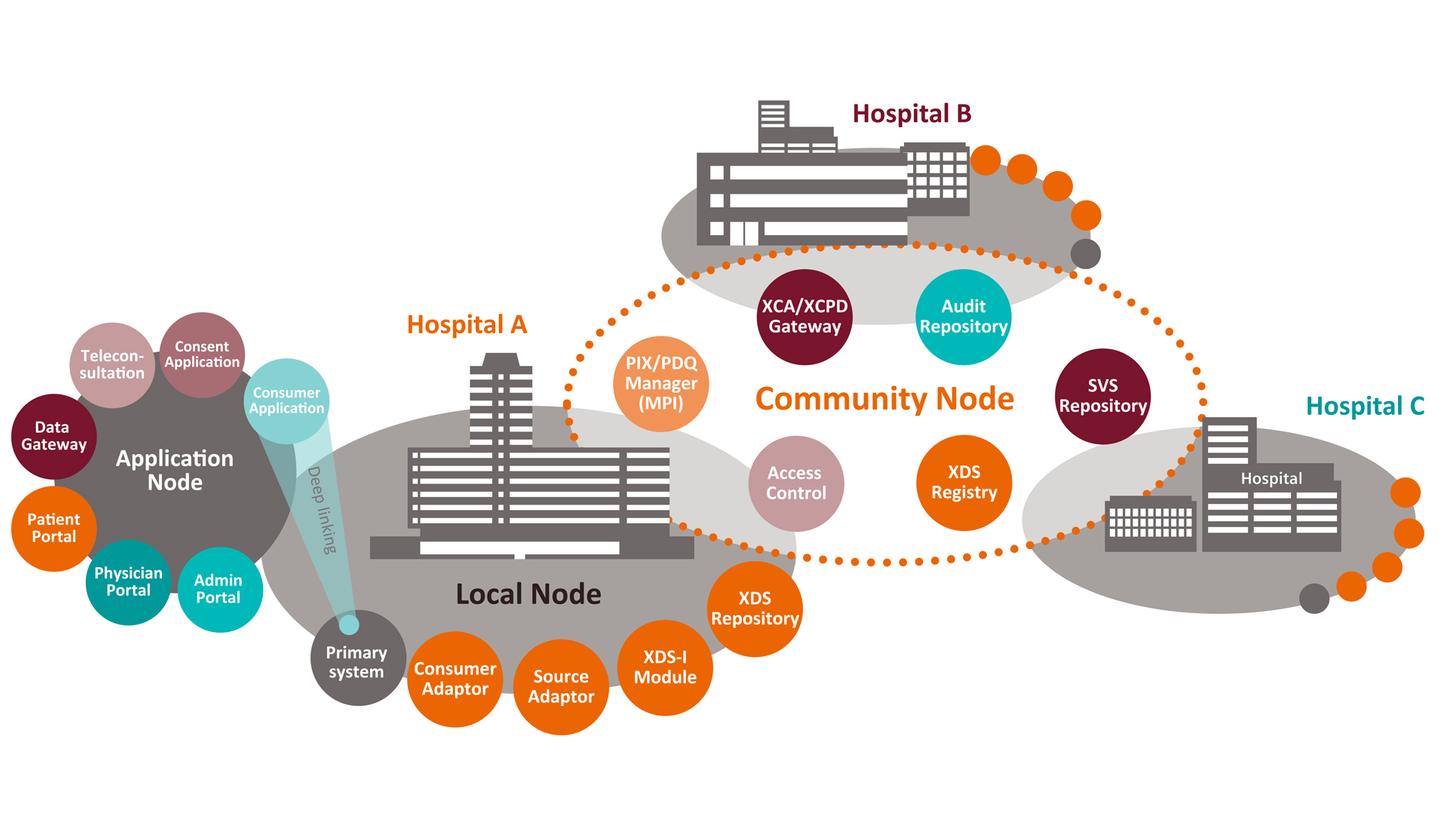
The IT landscape of most clinical institutions is rather complex and heterogeneous. Furthermore, strict data security requirements have to be observed. eHealth Solutions make patient information seamlessly available across institutions while complying with national and international security standards. Its components can be individually implemented, depending on the need and the existing infrastructure of the clinical institution.
Three types of network nodes can be distinguished within a network:
Local Node
The Local Node is a network node that is installed in a participating institution (or as central tenant) and connected to the local primary systems. It enables the participation in the network of the institution.
Community Node
A Community Node provides central services such as an MPI, a document register or an authorization system and connects the Local Nodes of the participating institutions to a health network (“affinity domain”).
Application Node
The Application Node provides the framework for a pool of different applications that can be placed on the network. This supports cross-institutional treatment as well as workflows.
Main functions
- Identification of patient through matching of master data and unique identifiers
- Data exchange of patient-related documents, images between communication partners
- Patient-centric search and retrieval of images and documents
- Control of access rights
- Full audit trail
- Support of cross-facility processes
Infrastructure Components
The eHealth standards-compliant IHE networking infrastructure provides the basis for the exchange of health-related data. The infrastructure consists of following components. Learn more by clicking on the links.